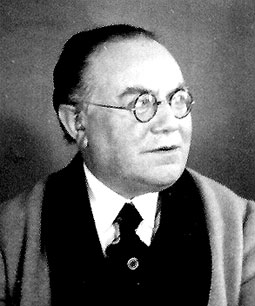
The third-semester-student of polytechnic school in Hildburghausen Heinrich Beck, son of the deceased vicar of Queienfeld, a young man especially talented for and enthusiastic about the electric technique, has accomplished
|
Heinrich Beck - The Life Of An Inventor
|

|
Heinrich Beck was born on September 20 in 1878 as the son of the vicar Gustav Rudolf Beck and Alma Beck, born Schuffner, in Bad Salzungen (Thuringia). He discovered his interest for technique during his practical work as a locksmith learner. Although he had attended a secondary school for several years, a manual occupation appealed more to him. This was followed by studies at the polytechnic school in Hildburghausen and as a guest student of Adolf Slaby, the first professor in ordinary for electrical and mechanical engineering at the Technical University of Charlottenburg. Even at this time he had already occupied himself with the construction and production of a dynamo machine. This led to his first contact with the light technique when this device was used for the electrical supply of a searchlight arclamp.
The Meininger Tageblatt of April 23, 1896 reported on this subject:
The third-semester-student of polytechnic school in Hildburghausen Heinrich Beck, son of the deceased vicar of Queienfeld, a young man especially talented for and enthusiastic about the electric technique, has accomplished |
a definitely well made dynamo machine of the newest kind during his spare-time and the holidays for the illumination of the machine-factory of G. Eichhorn,
which entirly satisfies all expectations. The searchlight connected with the machine has a brilliant effect on long distances. Thereby the electric lighting - to our knowledge - enters for the second time our city. Several weeks ago the gallery of the residence's castle was equipped with electrical light and probably a further proliferation of this modern achivement will happen in a short time.
 In 1902 Heinrich Beck became acquainted with his later wife Bertha that participated to a large extent on his business activity in the field of lighting technique. With just some hundred Marks of borrowed money, he established a simple research facility in the basement of a guesthouse near the community in 1903, which can be considered as the core of the later Physical-technical Laboratory. Here Heinrich Beck explored the possibilities of modern illumination technique on the basis of recent scientific publications as The Electricity in Gases by Dr. Johann Stark (1902).
In 1902 Heinrich Beck became acquainted with his later wife Bertha that participated to a large extent on his business activity in the field of lighting technique. With just some hundred Marks of borrowed money, he established a simple research facility in the basement of a guesthouse near the community in 1903, which can be considered as the core of the later Physical-technical Laboratory. Here Heinrich Beck explored the possibilities of modern illumination technique on the basis of recent scientific publications as The Electricity in Gases by Dr. Johann Stark (1902).
In this laboratory the development of the first, "automatic feed arc lamp" (without any clockwork, 1903) was proceeded to the point, that in 1906 the first samples could be presented in public. At the turn of the century Arc Lamps turned up in Berlin in many important places. and abroad. presenting an exposé, in which Heinrich Beck emphasized the uncomplicated construction of his invention and the accordingly low prices (around 10 Marks for the clockworkless Becklamp compared to the meachnically regulated arc-lamps used so far for 60-110 Marks a piece). These lamps were sucessfully demonstrated in the presence of interested sponsors. Just refer to The Becklamp for technical details. |
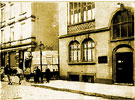
|
In 1906 the founding of the German Beck-Arc-Lamp-Society in Frankfurt/Main with the place of business and legal seat in the Blücherstraße 22. There were inependant societies in England with the Beck Flame Lamp Limited, in Amerika with the Beck Flaming Lamp Co. in New York and the Beck Pacific Lamp Co. in San Francisco and also in Italy with the Società Italiana Lampade ad Arco e Impianti Ellectrici, Ing. R.Colombo e C. in Rome und the Exploitation Française des Lamps à Arc Brevets Beck in the French Neuilly sur Seine. |
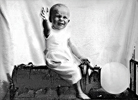 The Spanish Becklamp-Catalogue and the advertisement schow that the Becklamp was used successfully worlwide up to Africa.
The Spanish Becklamp-Catalogue and the advertisement schow that the Becklamp was used successfully worlwide up to Africa.
Heinrich Beck was designated the technical director and he moved into an appartment in the Schadowstraße in Frankfurt-Sachsenhausen. A time of nerve-racking occupations with further researches on this lamp, patent-quarrels and trips to costumers in Germany and abroad began. The arc lamp was always contended by the metalic filament incandescent lamp that - at this time - wasn´t available with sufficient power. From the beginning Heinrich Beck was the managing director of the society in Frankfurt along with Fred Chamier and director of the physical-technical laboratory in Meiningen at the same time. This parallel occupation demanded an intensive correspondence to discuss details of the arc lamp production and the development of the curling-tongs or thermopoles for hairdressers that Heinrich Beck was also working on. A key issue were the different conceptions of the inventor and Chamier regarding the durability of the blocks of the Becklamp. In 1908 it came to a conflict between Heinrich Beck and the counselor of the German Beck Arc Lamp Society, Louis Geiershöfer, over the question whether the society was allowed to use all further patents of Heinrich Becks free of charge or only those improvements made in in direct connection with the Becklamp. The inventor had always rejected a corresponding passage of the managing director contract, in which this free patent use was fixed by the society, and had not signed the contract up to a clarifying of circumstances. However during these two years of his work in this position all the remaining regulations of the present treaty had been kept to a large extent, so that obviously a certain juridical insecurity was given concerning the present contract here. Heinrich Beck argued with this problem in a 17-pages letter to the society explicitly, after he was disposed of his post as managing director against his will. An issue was also the exploitation of a patent abroad, in which Heinrich Beck saw himself insufficiently involved. He transferred his rights and participations to the remaining managing director Chamier and dedicated himself with the new capital intensively to the searchlight development. |
| Meanwhile the German Beck Arc Lamp Society got in serious economical difficulties and - according to the Hessian Economical Archive in Darmstadt - was noted in the adress-book of the city of Frankfurt in 1912 as "being in the status of liquidation". Thereby it can be assumed that the German Beck Arc Lamp Society existed for another three years after the retirement of Heinrich Beck. Concerning the thermopoles Heinrich Beck was now also negotiating with the National Heat Apparatus Company GmbH (NAWAG) in Frankfurt/Main that was managed by Mr. Lange who had obviously intrigued at the German Beck Arc Lamp Society against the director Chamier during his illness-caused absence. Heinrich Beck discussed technical details of the thermopoles with the Goerlitz based engineer Ernst Hasselkus. |
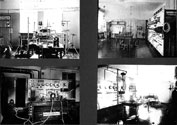
|
He set up a perfectly equipped laboratory (considering that time) in a representive villa and concentrated on the research of the electrical light arc and its application as a high-power light source. Just look up The Becksearchlight for the following period of time. Heinrich Beck summarized his longtime experiences as the developer of the Becklamp and the Becksearchlight: in the arcticle About Inventing and the Psychology of the Inventor - it remained his only more extended essay. |
|
Am bedauerlichsten ist aber derjenige Erfinder, welcher, nachdem er technisch eine Idee erfolgreich vollendet hat, durch mangelnde Geschäftskenntnis von gewissenlosen Ausbeutern um den Lohn seines jahrelangen Ringens und Strebens gebracht wird. Aber selbst, wenn es dem Erfinder gelungen ist, seine Erfindung erfolgreich in die Praxis einzuführen, wird er sich in den meisten Fällen noch nicht auf seinen Lorbeeren ausruhen können.
Je bedeutender und wertvoller die Erfindung, umso mehr werden ihm Gegner entstehen, die ihm entweder das Erfinderrecht streitig machen wollen, um sich dann in bequemer Weise der Arbeit des Erfinders bedienen zu können, oder die in oft geradezu schamloser Weise das gesetzliche Erfinderrecht verletzen und für ihre Geschäftszwecke benutzen, hoffend, daß es ihnen später durch lange hinausgeschleppte Prozesse schon gelingen werde, den Erfinder mürbe, für seine Pläne geeignet oder widerstandslos zu machen zu können. Hier heißt es oft gegen dunkle Ehrenmänner zu kämpfen, die nicht einmal davor zurückschrecken, solche widerrechtlich benutzte Erfindungen offenkundig als ihre eigene Erfindung auszugeben. |
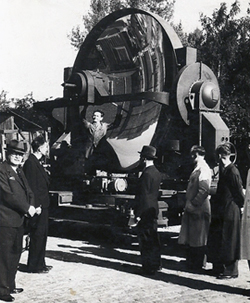
|
|
Hier heißt es oft gegen dunkle Ehrenmänner zu kämpfen, die nicht einmal davor zurückschrecken, solche widerrechtlich benutzte Erfindungen offenkundig als ihre eigene Erfindung auszugeben. Hier muß der Erfinder genügende Kenntnis und Erfahrung haben, um solchen betrügerischen Manipulationen erfolgreich begegnen zu können, insbesondere wird ihn solche Kenntnis veranlassen, sein Unternehmen dem Erfindungsgegenstand entsprechend genügend kapitalkräftig auszugestalten".
On August 17, 1937 Heinrich Beck died totally unexpectedly from a heart-attack. In an obituary in the Journal of Technical Physics , it was said: "Today, large searchlights for the navy and, in particular, flight control are being built around Beck's principle throughout the world Whereas the formerly used pure coal based spotlights have completely disappeared. After the unfortunate end of the war, Beck returned to Germany, and devoted himself to the continued improvement and development of his invention, although at the time there was little interest in the economic exploitation of such apparatuses, which were mainly aimed at certain military purposes. Only in the last few years these improvements have been applied to meet the needs of the recently founded Wehrmacht. So the last years suited him to satisfy his creativity, but they have also put a great strain on his health caused by increased efforts. In the midst of his work, during carrying out new basic measurements, Heinrich Beck died on 17 August 1937 at the age of 59 on a sudden heart attack, mourned by all who were closer to him. Perhaps the most remarkable feature of his character was his almost too great modesty. He never pushed for honors and recognition. Also regarding publicatios, he eonly emerged with a single major work. As a "self-made man" through his practical and technical training, he always had a clear view of the necessities of reality, and to this distinct perception he owed the majority of his successes. He also showed an amazing mastery of the theoretical foundations of his field. From this treasure of experience he was always willing to share with his closer or more distant employees or specialists. All these, and those who knew his fine kindness that knew no difference between high and low, will keep him a lasting, honorable memory". 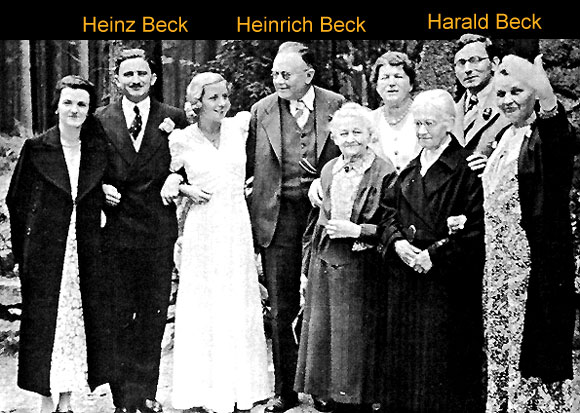
|
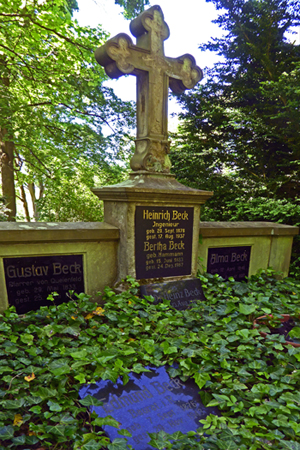
|
His work was continued over the next war by his two sons Heinz und Harald. The searchlight
development yielded a 1000-Ampere lamp and 3 metres reflector-diameter as a last highlight, which wasn't applied anymore as the high-power searchlights became obsolete in the rise of the radar technique. The carbon arc lamp was also replaced in other light technique fields as - for example - by the easy-to-use xenon arc lamp.
Until the invention of the laser the Beck Arc remained nevertheless the light source with the highest optical power density. As the use of the high-power light arc decreased the focus was shifted on other subjects. So the work of Heinrich Beck lives on until today in the plasmatechnical research and development of the laboratory in Meiningen. |